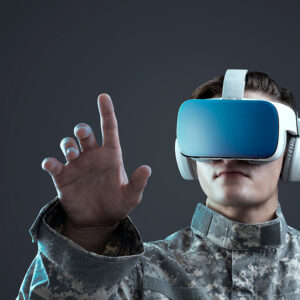The metaverse is quickly expanding, but its meaning remains unclear. Until an agreement on a definition of “metaverse” is reached, efforts to manage the technology development and related public policy could be muddled at best.
Even a brief review of the literature and social media reveals that the word “metaverse” has been invoked in a variety of contexts. In the last few months, for example, there has been news of people getting married in metaverse, investment firms buying real estate in the metaverse, and managers holding meetings in metaverse.
A closer look at these news items reveals two significant themes. First, disparate cases employ different blends of augmented reality, virtual reality, NFTs, and blockchain technologies, and all call the result “metaverse.” Second, many metaverse descriptions are from private companies’ perspectives.
For example, in Meta’s announcement, they defined the metaverse as “an embodied internet where you are in the experience, not just looking at it.” Similarly, Microsoft described its enterprise metaverse as being “…made up of digital twins, simulated environments, and mixed reality.”
Neal Stephenson coined the word “metaverse” in his 1992 science-fiction novel “Snow Crash.” In the novel, “metaverse” refers to a virtual reality-based digital world in which real people use their digital avatars to escape into the virtual world and avoid the grim physical world. More recent attempts to define metaverse may resonate with the spirit of “Snow Crash,” but they may yield to an organization’s goals and motivations as in the Meta and Microsoft examples
Venture capitalist Matthew Ball provides another well-regarded definition, describing the metaverse as “a massively scaled and interoperable network of real-time rendered 3D virtual worlds which can be experienced synchronously and persistently by an effectively unlimited number of users with an individual sense of presence, and with continuity of data, such as identity, history, entitlements, objects, communications and payments.”
Although some common themes emerge, such as interoperability and interconnectedness, a standard, concise and coherent definition is still lacking. In fact, there can even be a lack of agreed-upon characteristics or capabilities. This inherently stifles much-needed discussion about technology development, opportunities and risks.
In addition to the absence of central meaning and characteristics, there seems to be no distinction between guiding technologies and supporting technologies. In this context, a guiding technology is the core technology that enables the existence of a new product. In contrast, a supporting technology allows a new product to scale.
This added confusion can further complicate necessary discussion and technology management. Metaverse is often used colloquially as a “catch-all” term for anything involving a blend of AR, VR, digital avatars and blockchain-related technologies. The current public discussion around metaverse conflates supporting technology, guiding technologies and its various derivatives, making it difficult to advance informed discussions around the subject.
A lack of clear definition and distinction between related technologies supporting the metaverse complicates discussions around the regulation and protocols required to sustain a metaverse and mitigate its potential adverse effects. Although there are certainly beneficial aspects, given the negative effects of social media, gig platforms and other emergent technologies, it may be prudent for lawmakers to start considering regulatory regimes that not only foster innovation but also protect the broader society from any potential negative aspects of the metaverse.
An engaged public discourse is crucial for innovating and regulating any emerging technology. Developing a clear and concise definition of the metaverse and related technologies might help foster productive stakeholder discussions and craft regulatory alternatives. Metaverse is still at foundational stages, and a clear definition might go a long way toward building a decentralized metaverse in which everyone can safely participate.

